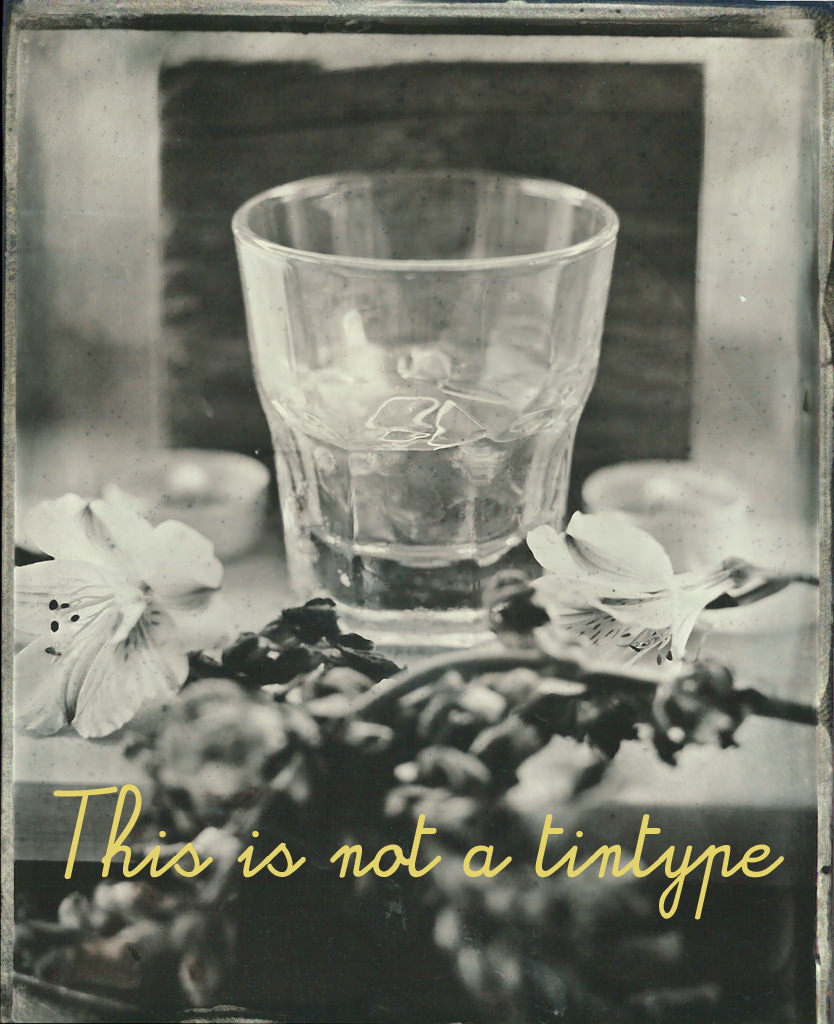Just like marks in the vinyl grooves of an LP record are the direct physical imprint of a measured pressure wave that one traveled through space, the presence of silver on a tintype plate is the mark left by all the photons that hit it. We shepherd a series of physical processes and transform matter to create a unique, tangible artifact that will stand as an independent physical record of our existence at that particular moment in time. In an era of increasing digital ubiquity, relentless inquisitors want to reflect not only on what has been gained but also on what has been lost.
Matter matters
There is something profoundly human in the drive to make a physical imprint on our environment. We are driven to manipulate the physical world around us and make it hold something of us. We integrate ourselves into the universe by making our experience a part of that matter. The rock is hard, it’s millions of years old, and it was carved by someone at some point. When we carve that rock, we transcend the constraints of the the laws of physics that rule our lives and we have finally become part of the big story. We can die but we still existed…
We ask the universe to be the guardian of our humanity, and by universe, I mean “atoms and particles and time that form what we perceive around us, that we’re not even sure what it is, where it starts or end, that we’re made of but somehow feeling separate from…” sense. We ask it to provide a surface for us and the process of transcribing this incorporeal mental construct into a physical manifestation bridges the gap between our experience and the physical world. Then, when someone else witnesses this mark we made, it creates a continuum which we need in order to function in the great mystery.
Bytes bite
An electronic record doesn’t support us in the way that a physical one does. By definition, it is not continuous. It systematically quantizes anything we feed it, regardless of its significance, and encodes it into endless streams of seemingly random on/off states from which we can perceive neither structure nor meaning. In order to consume a digitized version of something, we rely on a decoding process to reassemble the raw data in a way that creates the likeness of the original. Alternatively, we also rely on computing power and statistical algorithms to generate a signal that is altogehter artificial but that produces something we recognize as familiar. In either case, the stuff that holds the meaning is transient and immaterial; it reminds us of something but it is not that thing itself. As digital tools become more powerful, the illusion of similitude will become increasingly convincing but ultimately, it will never have the life of something physical. It may have a life of its own but it’s in an alien world of pure logic and without senses that we peer into through shiny devices and smooth interfaces; they lure us in with the illusory promise of infinite creative control but ultimately filter out all that is intangible in the world we actually inhabit. The machines aren’t able to transcode what they can’t quantify, the mysterious, the unexplained, the sacred. They digitize and represent the surface with methodical precision but they don’t capture the essence.
Especially if the power goes out…
Herding photons
Going back to the original question: why do I enjoy making tintypes? I love the fact that each exposure results in a single tangible artifact that frees you from the crazy-making tyranny of unlimited undos. You prepare the shot as best you can, you commit your actions to the plate, and you see the results of it. Then you move on… It takes purpose, vision, courage, and conviction, because you can’t “fix it in post”. It’s a truly magic process, too, specially when you dunk the developed image in the fixer and watch the positive result appear through a milky cloud. I call it the Harry Potter moment because it looks like a VFX element from those movies, except real. Also, the way we have been working, it’s a very social activity. It takes about twenty minutes from start to finish and people tend to gather around the booth chatting and observing the process, usually with smiles on their faces. We take our time, we experiment…





What a great post, Thomas. I am a firm believer in the physicality of making things. Comfort with digital and real world creation is a sweet, sweet mix. I loved this reverie on what resonates with you about the process, and the philosophy of the viewer’s connection to the maker. Saving my pennies for those special scrolls.
Thanks, Tina. You definitely are eligible for both the “supporter of Thomas” and family discounts.